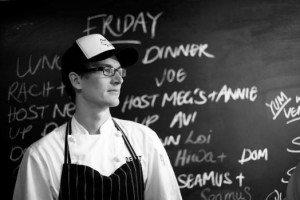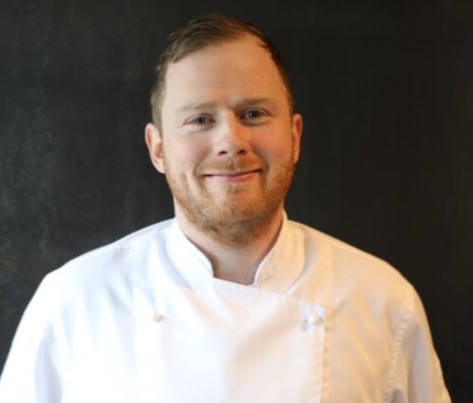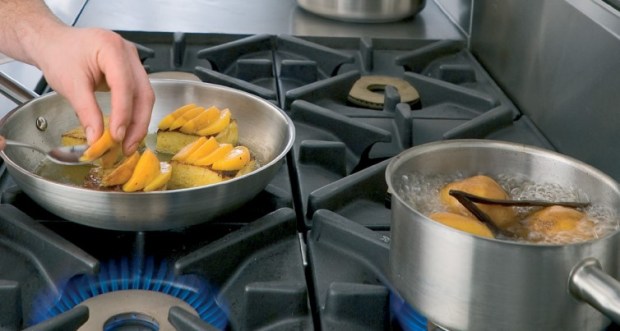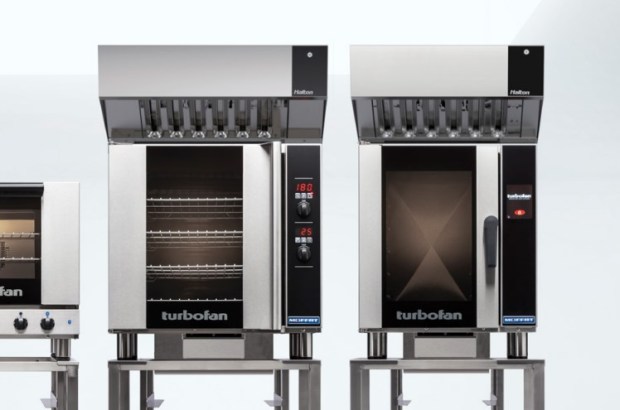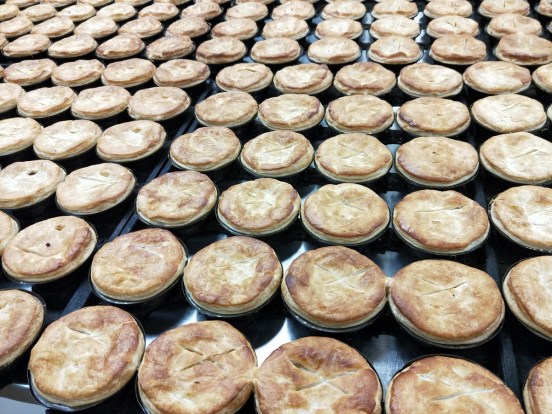Hospitality Business asks industry experts Tony Adcock, Kyle Street, Mike Egan and Allistar Cox – to ‘crystal ball gaze’ the hospitality landscape 10 years from now. They describe what they see, reveal how their projected developments could impact on their business and have wise words for other hospo professionals on how to future proof their business.
Tony Adcock
After 40 years in the hospitality industry, restaurateur Tony Adcock’s pedigree is impressive and illustrious. He has been involved with some of New Zealand’s most significant ventures, including Auckland restaurants Le Brie, which opened in 1975 and Harbourside Restaurant located in Auckland’s historic Ferry Building, in 1988.
In 1980, he also applied for New Zealand’s first Sunday Brunch licence and helped establish Auckland’s highest restaurant, Orbit, in the city’s landmark 328 meter Sky Tower.
Over the years, Adcock has learnt there are a number of cycles in restaurant developments. “There’s a flourish of new restaurants and concepts coming all at once, often at the end of recessions when landlords are more accommodating. Then it’s steady as you go until another downturn, which sorts out some operations before we start again.”
In this last developmental stage, Adcock has noticed a trend to place the restaurant business alongside the entertainment industry, where the atmosphere and experience of the visit is most important, and that the food and service quality should follow. “While service standards have become more casual, there’s still a need for friendliness and efficiency to give an all-round experience,” Adcock says.
Price points of menus have become very important too, keeping dishes under $20 and $30. “Thus, we’ve seen an increase in shared plates, where these prices can be realised. This style of dining reduces kitchen and service costs too, removing the timing issue with dishes coming out as they are cooked. Ethnic restaurants broaden our culinary experiences and will become staples in our cuisine, as has sashimi and sushi.
“There’s a general misconception that the hospitality industry cannot be a professional career choice. What has really happened is that many of the people with good management skills have opened their own businesses – we have had such a rapid expansion of operations that it has left us short of management and senior waiters.”
With TV making our industry trends, Adcock believes more people will take to the industry as a life career choice. “But wages and salaries will have to increase to compete with other industries.”
These days, Adcock consults to restaurants on start-ups, kitchen layouts and general management problems. He also has a formal relationship with the Restaurant Association, answering queries from Association members one afternoon per week.
As one who knows the industry inside out, he feels it’s in good shape. “This country has a dynamic hospitality industry that will continue to flourish with the odd hiccup. And I think it will become the place where people come to look at our operations for concepts and quality, instead of us having to go overseas to collect experiences.”
Kyle Street
Street is executive chef at Al Brown’s Auckland Depot restaurant and Federal Delicatessen right next door. Starting out with Brown at Logan Brown in Wellington, this former Wellington-based gourmand has risen above the role of Brown’s protégé to a respected chef in his own right. Street took time out from his hectic schedule to answer five questions for us.
Where do you see the hospitality scene in New Zealand heading in the next 10 years?
There’s a major shift towards casual and informal dining and this will only grow stronger. Our more formal restaurants may be taking note, and I suspect we’ll see a more relaxed fine dining scene.
Which cuisine styles do you think will come and go, and which ones might linger?
Food trends will continue to rise, but I think restaurants that stand the test of time will have a passion for delivering hospitality first. If a restaurant’s driven by a love of serving and creating great experiences for their customers, no matter what their favoured cuisine, they’ll thrive.
What are the most significant changes and challenges that chefs will face in the next 10 years?
I use a lot of secondary cuts, delicious yet under utilised products, at Depot and this will become more commonplace as the price of ingredients rises. Chefs in all types of restaurants will need to be savvy when it comes to menu choices and seasonality will be more common too. New Zealand producers of small goods will continue to increase in number and in quality, working closely with chefs to provide more variety and the ability to purchase locally. As the foodie culture continues to grow, so will demand for quality food and service. The benchmark of a good restaurant will get higher and higher – a challenge we chefs all thrive on.
What do you love most about the hospitality industry, and what frustrates you?
For me it has always been the family/team atmosphere – you bring a group of vastly different people together, all contributing towards one common vision. Every day is a new challenge, a new opportunity to deliver to even higher standards. I particularly enjoy seeing young chefs gain confidence, hone their skills and thrive here in New Zealand. Frustrations? It would have to be the exodus of these young talented chefs overseas. There’s a massive shortfall of chefs in New Zealand. I’m all for overseas experience. I’ve been myself and it was extremely rewarding and my plan was always to bring that knowledge back and strengthen our hospitality scene.
Imagine you’re sitting down to your last meal. What would it be?
I’d have to start with a couple dozen oysters freshly harvested that morning, followed by Bistecca Alla Fiorentina cut at least 2 inches thick, cooked over a wood fired grill, all washed down with a cherry cola float and a slice of NY cheesecake.
Mike Egan
Indefatigable, Wellington-based restaurateur and national president of the Hospitality Association of New Zealand, Mike Egan has his fingers in numerous, long-established ventures, co-owning Osteria del Toro for six years and Monsoon Poon for 13 years.
What do you think the hospitality environment is going to look like in 10 years’ time?
We’re behind comparable modern economies in the number of meals eaten outside the home, so we should see the percentage rise in the next decade. If by then we match the current USA levels that will mean more than 55 per cent of expenditure on food spent in our restaurants. This is great news for growth, but we must make sure we’re providing dining solutions that excite the customer.
What are the challenges that operators need to overcome to survive?
We need to understand the motivators that influence decisions as to whether our customers eat outside the home, and then where they will actually choose to dine.
For instance, those in their 20s and 30s look for power and performance; 40 to 50 year-olds look for style and prestige; and the over 60s for health maintenance. We also need to grasp that we’re selling time. It’s our customers’ most precious resource therefore trust in your brand means no risk with their time. The relationship with the customer is no longer driven by the restaurant owner but by outside forces via social media, online review sites and blogs. We need to build an authentic emotional relationship with our customers and staff that is compatible with all of our shared values.
Keeping a venue’s value proposition fresh, exciting and consistently attractive takes skill and energy. Any tips for those operators not sure where to head next with their business?
Change your mind set and use the following new touch points to refresh your brand and your team culture, because service is the future. We need to move from thinking of consumers to thinking about people, from product to experience, honesty to trust (which has to be earned), from identity to personality, function to feeling, from communication to dialogue and service to communication.
What are some of the main trends which will help shape future hospitality concepts?
Transparency: we have to be honest with everything we do. Naturalness: this is now a type of religion in our highly industrialised society. Culinary heritage of our home area becomes a counter trend to globalisation. Menu heroes: menus need to showcase freshness and bold flavours. Sustainability, not organics, is the new green. Building sales is more important than buying sales: discounting is a fear strategy. Upscale simplicity and facilitate riskless adventure.
What frustrates you most about the industry?
We complain about bureaucracy and red tape, but think of our colleagues in Mexico where it takes 221 different permits to open a new restaurant.
And what excites you?
Worldwide the industry suffers from low profitability and paucity of industry professionals, but New Zealand has room for growth as the trend increases for meals eaten outside the home. We also have some outstanding product and a growing pool of energetic hospitality professionals.
Allistar Cox
ALLISTARCOX Architecture is an award-winning team of creatives who consistently push the boundaries in spatial design. Allistar and the team have a longstanding history of creating novel, high quality hospitality spaces that celebrate how we eat, drink and socialise together.
What new trends do you see emerging in Hospitality over the next 10 years that will have an impact on the way you design spaces?
It’s hard to separate what happens with bars and restaurants and what’s happening in a wider context. This is because hospitality spaces such as bars and restaurant operate essentially as our public living and dining rooms.
Regardless of fashion and trends or perhaps because of them, these are places that have the potential to inspire and enrich us collectively. The best bars and restaurants both contribute to and cultivate the ideas, identity and creative cultures of our towns and cities.
On a more specific level we have a rapidly evolving and increasingly sophisticated food culture in New Zealand that continues to be curious about exploring the new. The Internet and other media has been a major catalyst for this and accelerating wider trends and cycles within hospitality culture.
Our drinking culture is maturing too with the current new beer movement translating into several things – ‘craft’ describing more than just the alcohol offering. People do inherently want to engage with things that have an honesty and quality with both construction and materials, which is pretty timeless. The whole industrial kitsch thing (now fairly overcooked) was partly a precursor that resonated with people because of our continuing nostalgia for the ‘maker’ culture of our past.
While craft might be timeless, hospitality spaces will also continue to reflect the moment. Right now there’s something especially interesting about the transient. The idea of a pop-up bar perhaps ties into our rapidly diminishing modern-day attention spans, the prevalence of empty spaces post-2008 or our earthquake prone cities!
There’s also perhaps still life left in the dive/ junk bar concept which we first explored eight years ago with Mighty Mighty. A global recession certainly forces everyone to think about how to be innovative on a tight budget. However we do seem to be turning a corner, so how people’s changing aspirations feed into hospitality design will be interesting.
Elsewhere the concept of domestication will continue to influence hospitality design. This isn’t so much by decorative effect but removing the formalities of these spaces. A gesture such as turning a bar around so the fridges face a patron removes the barrier and social formality, and your relationship with the bar tender is immediately more relaxed.
What are the key design elements in your mind that determine whether a hospitality venue is successful or not?
Understanding how good design contributes to your client’s prospects is critical but only part of the recipe. Truly great hospitality ventures require a strong, shared vision and an operator who can create the culture that a good hospitality space tries to foster.
Great design is also about understanding how a restaurant or bar functions effectively – kitchens that work for the offering provided and front of house spaces that are intuitive, activate the energy of a space and contribute to ambiance and comfort.
An intimate understanding of the occupation of a space is crucial along with how it will wear and breathe. We often talk in the studio about a building’s ‘karma’ – whether it’s restoring elements to their rightful place or just getting the simple orientation of things such as the bar resolved in order to set up a space so, for a better word, it flows properly.
Who, what and where inspires you?
It’s about taking simple pleasures, rituals and enjoyment of food and company and translating this into architecture. I’d also say history is an extremely useful mirror and an unlimited treasure trove to what works (and what doesn’t).
There’s an enduring fascination with contrast – combining the beautiful with the ugly. The juncture between the sophisticated and the throwaway and the tension when you combine them together generally provides an interesting outcome- as long as it is not a hodgepodge of ideas.
Crucially the best projects are always born out of a great relationship with clients whose feedback and input is critical. Plus of course the team here at the practice provide constant inspiration and feedback.




